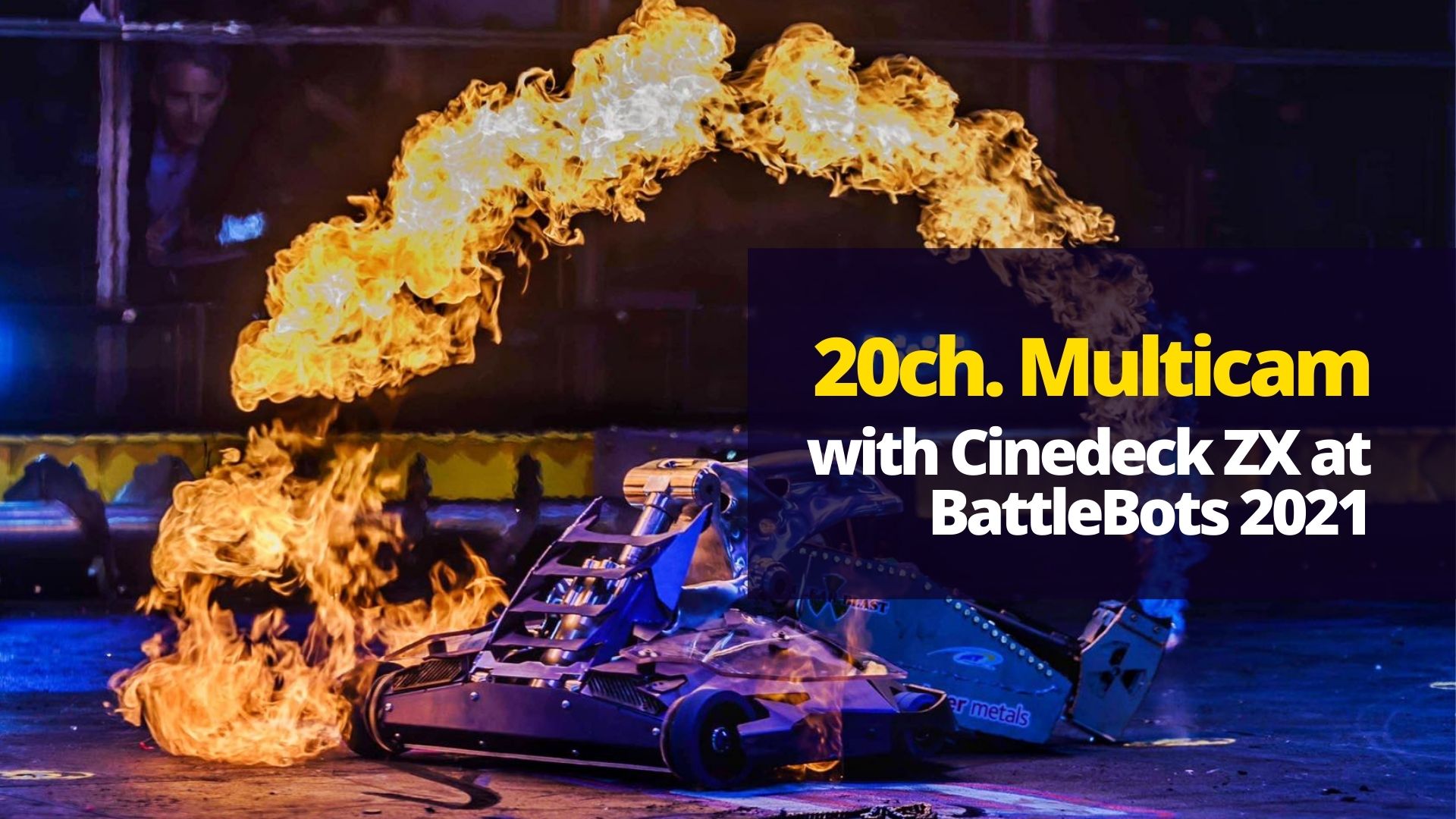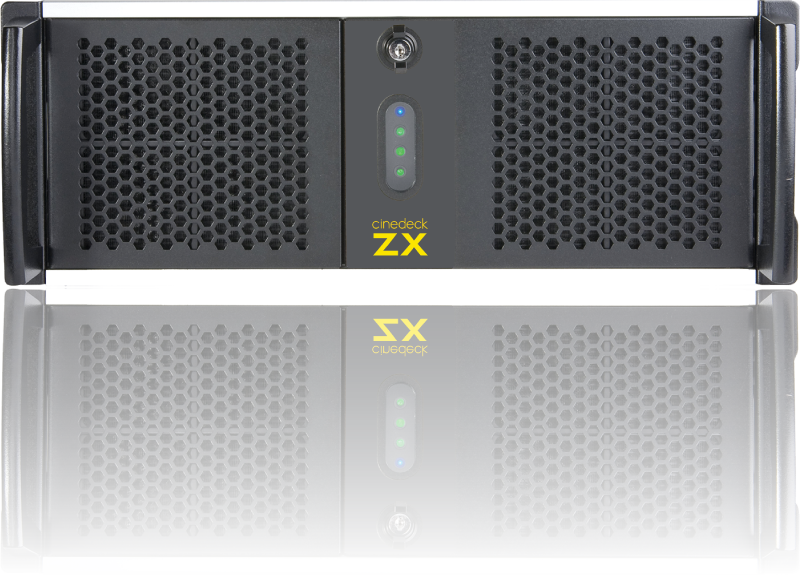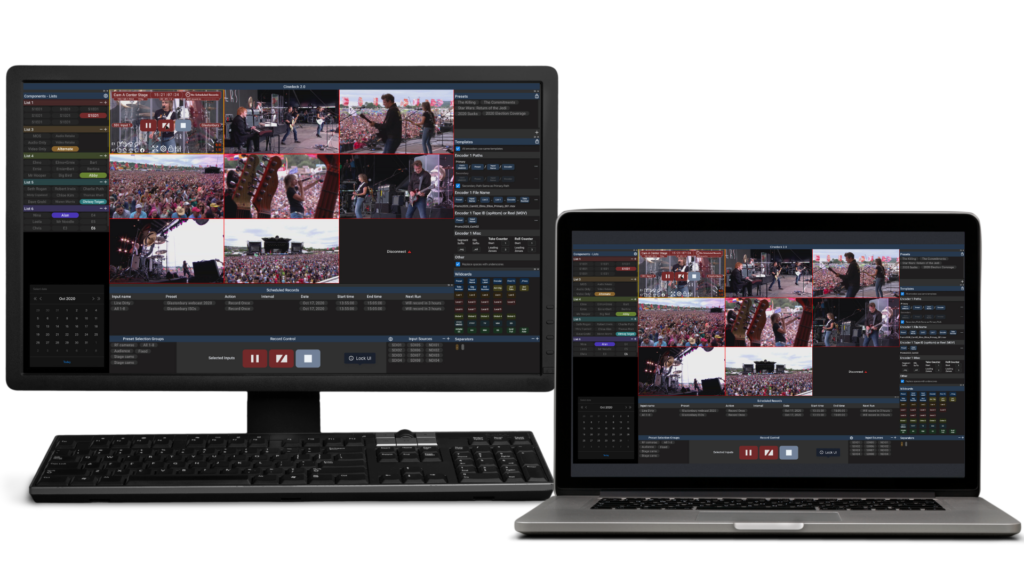BattleBots® is the premiere robotic combat competition in the world, offering an exciting reality television program that has captured the attention of a fanbase that spans the globe. Teams of robotic engineers from all over the world face off in creating gadget-rich battle robots that meet to fight in a dramatic arena.
Last year the program finished shooting in Las Vegas for its 6th season, which they described as “more destructive, more lethal, and more intense.” The BattleBots® production team turned to QSR Systems to engineer a solution that would make for an efficient workflow from the moment cameras started recording to final file delivery, a solution heavily influenced by the dependability and ingenuity of Cinedeck.
The users: QSR Systems CEO, Doug Cavaliere and his team of engineers
From their headquarters in Valencia, California, QSR has been providing the entertainment and broadcast industry with engineered solutions ranging from edit and storage solutions to on-set media management tools and lab-based transcoding services. In the words of 20-year industry veteran and QSR’s CEO Doug Cavaliere, “We work from the top down and we are engineering-focused. We make sure that we provide engineered solutions for our clients that really work for their specific situation. The typical rental house is a non-linear pipeline. They’ll mainly deal with editing and finishing. We get involved at a much earlier point than that. We like to deal with pre-production and we’ve gotten really good at reality competition shows with a ton of cameras.”
QSR’s top-down approach with considerable involvement from pre-production to final delivery proved particularly useful for BattleBots® Season 6.
The challenges: Recording thousands of hours of footage in a usable, editable format
While Season 5 of BattleBots® was a success, an experimental production system led to some issues during production, which lingered into post and slowed down the editing and finishing workflow. For Season 6, the BattleBots® asked QSR to do what they do best: engineer a maximally effective production system that would not only make for a smooth production, but provide footage that is easy to work with in post. Cavaliere and his team were confident not only in their own ability to design the solution, but in the technology that Cinedeck would provide to help make it happen.
There were 60 cameras rolling on the BattleBots® Season 6 set, resulting in thousands of hours of footage to be sorted through, edited, and finished. This scale of production can cause all sorts of problems when it comes to editing and storage. But QSR had a solution involving not one, but FIVE Cinedeck ZX85s. In total, QSR supplied a master suite that included the ZX85s, DIT workstations, and utility workstations, all of which were connected to 10-gigabyte and 40-gigabyte high speed network storage. Altogether, this created a collaborative media pipeline from the set in Las Vegas to the post-production team in Los Angeles throughout production. Here’s more on that solution from Doug Cavaliere:
“Cinedeck gave us the ability to create a very streamlined workflow for this size of production. But it comes down to engineering it the right way. It’s not just about having the right items, but putting them together the right way. Cinedeck team really stepped up this year, pivoting to come up with additional Cinedecks. We ended up going with five ZX85s, all in 4 channel dual proxy record mode.”
The solution: FIVE Cinedeck ZX85s in 4-channel dual proxy record mode
For Cavaliere, the dual proxy record mode is Cinedeck’s magic. In a production with as much footage as BattleBots®, the ability to record a master level proxy while recording an Avid editable proxy in native Avid format is invaluable. “The dual proxy feature eliminates a very time consuming step for QSR’s clients. Cinedeck is one of the very few systems to perfectly combine the online and offline to where you can actually use it. They’ve taken the time to understand the needs in a production and create a product that really improves the process.”
ZX can record all (2K-HD-SD) inputs with the users’ choice of available master and proxy codec. In this particular instance, QSR recorded XDCAM50 hi-res files while simultaneously recording an Avid lo-res editing proxy. Recording in both codecs enabled the post-production team to easily work through the footage and make edits without spending hours and hours on exports, bouncing back between low-res and high-res file types.
In addition to having the ideal hardware for the job, QSR utilized the Cinedeck 2.0 Client UI to control the Cinedeck channels. “The new UI was amazing. It gave us the ability to control all of our decks from a single interface. Also the naming and wildcard system made it easy to add in our show specific metadata.”
BattleBots® turned to QSR not only because of the equipment they offer, but also because of their expertise, professionalism, and ability to solve problems. A company that consists of about 90% engineering professionals is bound to come up with a solution and that’s exactly what QSR did. Similarly, QSR chose Cinedeck not only because of the technology offered, but because of the team behind the machine. “I always know I can sit down with Charles, Jane, and the entire Cinedeck team and really lock into the specifics of a project and create solutions that really work in mission critical moments.”
QSR has been providing the west coast with innovative solutions since 1991. When you tune into BattleBots® Season 6 on discovery+, you’ll likely be drawn to the creativity, hard work, and execution that went into the stars of the show, the battling robots. What you won’t be able to see is the perfectly configured master suite engineered by QSR to ensure a smooth process throughout the creation of this exciting show. Like Doug Cavaliere and the team of engineers at QSR Systems, Cinedeck is dedicated to bringing clients the one-of-a-kind solutions they need to maximize efficiency and achieve the highest levels of success in video production and post-production.



